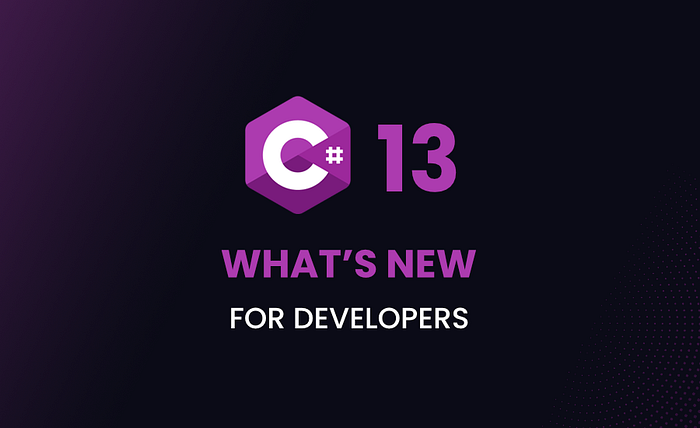What’s New in C# 13: Beginner-Friendly Overview

C# 13 brings new features that make coding easier, safer, and more efficient. Here’s a quick guide to some of the main updates and what they mean for you as a C# developer.
1. Improved params Keyword
The params keyword lets you pass a flexible number of arguments to a method. Previously, params was limited to arrays, but now it works with more types, like collections and spans. This means you can use params with lists and other collections, giving you more options when writing methods that take many inputs.
Example:
public void ShowItems(params int[] numbers)
{
foreach (var number in numbers)
{
Console.WriteLine(number);
}
}// Now, you can pass multiple numbers directly
ShowItems(1, 2, 3, 4); // No need to use an array directly2. New Lock Object for Better Thread Safety
C# 13 introduces a new Lock type for locking shared resources. If multiple parts of your code are trying to access the same resource (like a file or a database), you can use Lock to avoid conflicts. This makes code safer when running tasks in parallel.
Example:
System.Threading.Lock myLock = new System.Threading.Lock();
lock(myLock)
{
// Code here can only be accessed by one thread at a time
}3. New Escape Sequence: \e
In C# 13, there’s a new \e escape sequence for the "escape" character. This makes it easier to include special control characters in strings. Previously, you had to use a longer code (\u001b), but now you can just use \e.
Example:
Console.WriteLine("Hello\e[31m World!"); // Adds special characters for text formatting4. Simplified Method Matching
When using methods with the same name but different parameters, C# can now more easily choose the correct one. This update makes it simpler to write methods that are more flexible without getting errors when the compiler is unsure which method to use.
5. Use ^ Indexing in Initializers
C# now lets you use the ^ (from-end) index in object initializers. This allows you to set up arrays in reverse order directly in the initializer, which is helpful when creating countdowns or reverse sequences.
Example:
var countdown = new TimerRemaining()
{
buffer =
{
[^1] = 0,
[^2] = 1,
[^3] = 2
}
};6. ref Structs and Generics Compatibility
C# 13 allows ref structs (which are special types used in high-performance scenarios) to work better with generics. This gives developers more flexibility in using specialized types in their code. For example, now you can use ref structs with generic methods, making it easier to work with memory-efficient data types like Span<T>.
7. Partial Properties and Indexers
C# 13 adds support for “partial” properties and indexers, which means you can define parts of a property or indexer in different places. This is helpful when working in large projects where you want to organize code in sections.
Example:
public partial class ExampleClass
{
public partial string Name { get; set; }
}
public partial class ExampleClass
{
private string _name;
public partial string Name
{
get => _name;
set => _name = value;
}
}8. Choose Which Method is Better Using Overload Resolution Priority
Library creators can now add a priority to method overloads, which helps the compiler choose the best version when there are multiple options. This helps avoid confusion and errors in complex libraries with many versions of the same method.
These are some of the most beginner-friendly updates in C# 13. Each one adds new ways to write flexible, efficient, and safer code, making C# even more powerful for developers at all levels!







